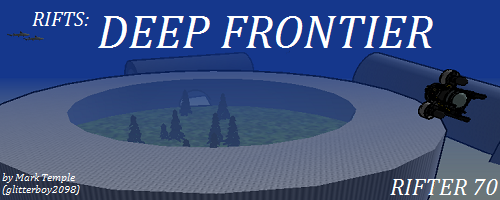obsessed wrote:glitterboy2098 wrote:while i have no doubt that the VF-1's GU hardpoint would be reinforced and designed to handle the GU-11 as much as possible, it would still have issues of stress and increased maintence issues. (the fact the hardpoint is on an arm, which in itself has many extra possible points of failure with the joints and where it locks into place, suggests that with reinforcement it may have some issues anyway)
plus, the Gu-12 would be a very different beast in that regard. i severely doubt that the VF-1 was original designed to use it, so odds are it's even higher recoil would cause even more problems.
consider that the
L7 tank cannon, which is the closest real world weapon i can find (at 105mm) with recoil information, has a recoil force of 10 to 60
tons (depending on the sub-variant of the weapon..). for a
single shotfiring 10 in the span of a fraction of a second? that's about 100 to 600 tons of recoil force.
that's not a gunpod. that's a heavy metal rocket engine..
a VF-1, according to macross OSM stats, has 23 tons of thrust per engine at max. (so 46 tons of thrust.)
pull that trigger, and not only will you stop moving forward, your going to very rapidly find yourself several hundred feet backwards from where you were. even when moving at mach 5. assuming it doesn't rip off the mecha, or just rip the arms off.
(also, of interesting note. the L7 is classified as a "low recoil" tank weapon.)
Glitterboy2098,
your narrow view on 1 gun selected to disprove the GU-12 without considering other 100mm cannon. There is no dispute the L7 and the German Rheinmetal 105mm guns have 60 tons of recoil. There is also the Rh 105-30 (30 denoting 30 ton recoil, half that of the primary version).
http://www.army-guide.com/eng/product3595.htmlAgain, you are only considering 1 out of dozens of 100mm through 105mm guns.
http://www.army-guide.com/eng/product3215.htmlThe Russian 2A70 uses a long-recoil mechanism. The shells is 100 x 192Rmm firing shells 300 m/s. Your chosen 105mm L7 fires 105 x 607-617Rmm shells, HE 747 m/s and APDS 1475 m/s.
Consierably shorter cases, much less muzzle velocity, much less recoil, and yet still a 100mm gun.
However, a low velocity weapon has some disadvantages that might make it incompatible with a fighter. For starters the slow ammunition speed makes it difficult to engage moving targets. The Russians get around this by using a tube launched guided missile, but there is not such capability listed for the GU-12.
Secondly, the range of a low velocity weapon is much reduced. The BMP-3 gets around this by the capability to fire the gun at a high elevation to allow the shells to arc down onto their target. The mount that a Gu-12 uses in fighter mode does not permit this capability, and manoeuvring the aircraft to make shots in this fashion is likely problematic in a combat situation to say the least.
Third, the slow muzzle velocity precludes the use of APDS as an anti-armour round. The 2A70 instead is mobile fire support for engaging troop clusters, light vehicles and field fortifications with HE-Frag shells. The anti-tank capability is from the tube launched ATGM. As the GU-12 is used on targets to heavily armoured for the GU-11, it needs to have some kind of armour piercing capability which implies a high velocity shell.
Finally, even with the reduced recoil, the 2A70 still has considerable recoil. Starting at about 35 seconds into
this video, you can see that the recoil of the weapon still rocks the 20 ton BMP on it's suspension. The Valkyrie only comes in at 15 tons, so it's going to notice that recoil off of single shots. The 2A70 only fires 1 shot at a time, up to 12 rounds per minute. The GU-12 has a rate of fire of at least 200 rounds per minute.
So, looking at all the above, I have to say that the odds are that the GU-12 is a high velocity weapon due to the way it is mounted and it's desired target profile. Even were it not a high velocity weapon, a low velocity weapon would still produce a significant recoil, especially when firing bursts, making using it in the air (and possibly even in a well braced posture on the ground) uncomfortable and potentialy dangerous for the pilot and vehicle.
so around 5kg per round I guess. What is the size of the round supposed to be?



